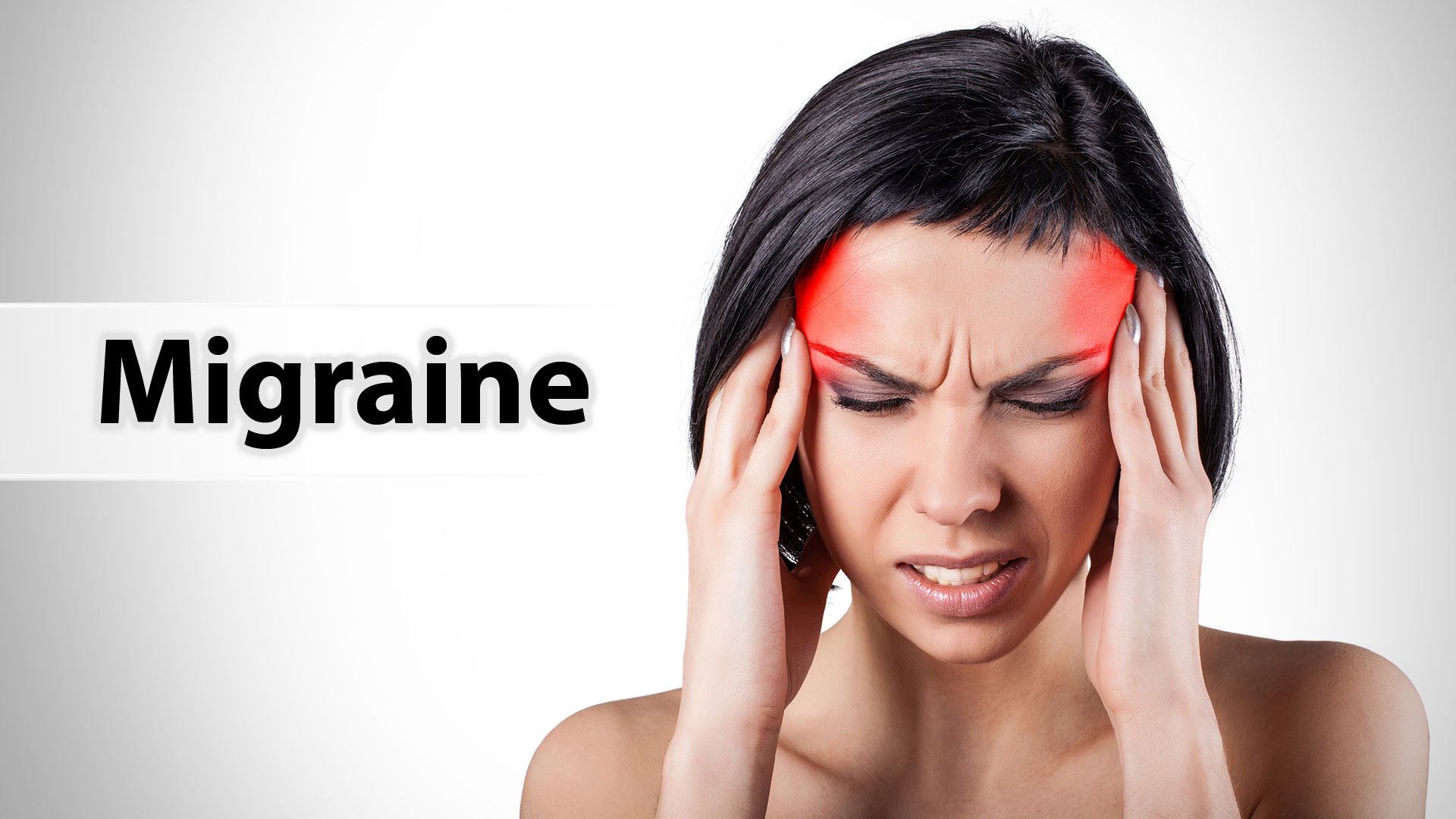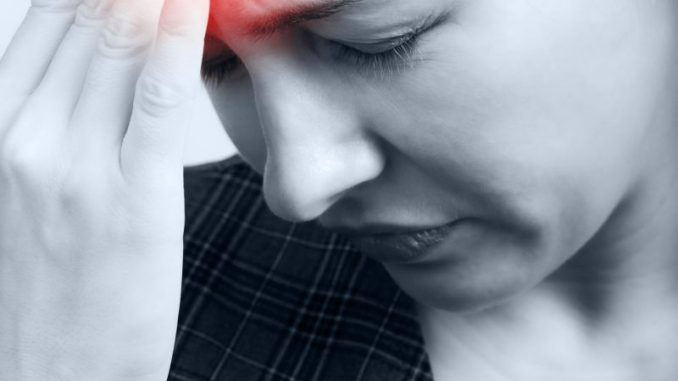
Migraines are severe, recurring, and painful headaches. They can be preceded or accompanied by sensory warning signs and other symptoms.
Common symptoms include:
Eye pain
Sensitivity to light or sound
Nausea /Vomiting
Usually pain in one side of head
Trigger Factors:
1)Hormonal changes
2)Emotional triggers Like Stress, depression, anxiety.
3)Physical causes -Tiredness and insufficient sleep , Low blood sugar ,poor posture etc.
4)Triggers in the diet -chocolate, cheese, citrus fruits , Irregular mealtimes.
5) Environmental factor -strong smells, second-hand smoke, and loud noises , temperature changes, and bright lights are also possible triggers.
Homeopathy has excellent clinical record in treating migraine safely and successfully. Homeopathic medicines work wonderfully in both acute as well as chronic migraine attacks.
According to the homeopathic system of medicine, migraine is a chronic disease occurring periodically. The patient may experience it as an acute problem, but because it is periodic and recurrent it needs continuous homeopathic treatment during the attack, and homeopathic medicines for migraine need to be taken even when there is no attack. All this is to reduce the frequency and intensity of subsequent attacks and eventually stop them.
In all types of acute and chronic illnesses, homeopathy applies the concept of individualization, which means that even if two people are suffering from the same type of migraine, a homeopathic doctor will study the whole case history of each of the patients — their exact nature of symptoms, temperament, feelings, likes and dislikes — and then suggest a remedy suitable for each of them to ascertain deep-rooted and permanent cures.

Headaches are common among working people as accumulated stress results in headaches and tiredness. Among the many different causes, strain on the eyes is one of the leading reasons for that annoying headache.
Taking an eye exam is recommended in case you are having headaches. The issues may not always be related to the eyes, but still a thorough eye check up is recommended. Strain in the eye is caused when small muscles present in the eye have to put in more effort than usual. Symptoms include aching, tired eyes with blurred vision and accompanying headaches. Such headaches are caused because of the following reasons:
Astigmatism
The cornea is in abnormal shape and causes people to squint when they want to focus, and this leads to bad headaches.
Hyperopia
This disorder is also called farsightedness. In case of this disorder, the images are focused by the eye behind the retina, and causes blurred vision and strain upon the eyes. Headaches occur as a result.
Presbyopia
This kind of problem occurs when the lens hardens and becomes inflexible with old age. This makes it hard for a person to focus and causes sore eyes along with headaches.
All disorders or conditions of the eyes can be rectified with the use of prescribed spectacles and contact lenses. For people already having glasses, regular eye check up should be carried out. Your power may increase which you are unlikely to notice, so regular check ups are vital.
Other causes
Headaches related to eye strain and eye problem can also develop from other causes. They are:
1. Glaucoma, an eye disease also causes headaches. This disease is characterized by the development of a fluid in the eyes, which in turn causes the internal eye pressure to shoot up. This pressure fluctuation can lead to headaches in many cases of glaucoma.
2. Cataract affected people suffer from headaches as well. Cataracts develop in individuals due to ageing. The lens becomes cloudy, and the vision gets blurred and slowly diminishes. The eye has to give more effort resulting in eye strain and accompanying headaches.
Prevention
In case you are having headaches, and you are not being able to find out the reason behind it, you should have an eye check up. Eyes are very sensitive and added strain to them causes headaches. People who use computers for long hours are affected by headaches due to eye strain. The best prevention is to have an eye examination and switch to glasses or lenses if required.
Headaches are of various kinds and arise from different factors, but eye strain is known to cause a lot of headaches in people who do eye stress involving activities.
Homeopathy as a branch of medicine has evolved drastically over the years. Unlike others, homeopathy's greatest advantage is its complete lack of side effects and its ability to treat a myriad of diseases and ailments. One of the most common causes of concern for most people is a nagging perpetual headache. Over the years, homeopathy has developed various medicines to confront and treat different kinds of headaches.
Some of the different kinds of headaches and homeopathic remedies associated with them are:
Throbbing and excruciating pain in the head: In case you are suffering from constant throbbing (or excruciating) pain with the agony occurring mostly in the front and right side of the head, Belladona is the most trusted medicine you must go for. Belladona works wonders in treating shooting pains that mostly aggravate through the course of the day. One of the most important advantages of Belladona is its ability to relieve you of the pain for a long time, with very less chance of any recurrence.
Headache as a result of hangover or problems in digestion: Consumption of excessive alcohol or problems in digestion and constipation also contribute to a throbbing headache located mostly over one of the eyes. In such a scenario, the homeopathic medicine called Nux Vomica is extremely effective. This treats the headache emerging from the host of issues and also alleviates the lingering sensation of nausea and giddiness that are often accompanied with the pain.
Severe headaches that result in vomiting: Sometimes, the pain may be located on the top of the head with its severity increasing with the advancement of the day. In case you are suffering from such a headache, chances are vomiting may follow as a result of the intensity. In such a situation, a medicine called Sanguinaria should be administered. The medicine works best if you lie down after having it.
Headache emerging from partial blindness: Headaches and vision are inextricably related.
Therefore, in case you are suffering from partial blindness or any other visual disorder, chances are that a severe headache will soon follow suit. In such a situation, you could also suffer from nausea and tendencies of vomiting. The homeopathic medicine called Iris is extremely beneficial in reducing the intensity of such headaches.
A migraine is one of the worst form of headache. It is reported that over 90 percent of people who suffers from a migraine are unable to work. The intense pain totally makes them vulnerable. A mammoth 113 million workdays are wasted globally due to this problem. This being said, if the pain is slowly starting to set in, it is possible to manage it at the workspace.
Here is a convenient guide to do just that:
1. Pain Medication: If you are a migraine patient, it is likely that you have your migraine medication with you. The first step is to try the medication. If on the other hand, the medication is not available basic painkillers can be given a shot to manage the pain. Basic pain medications, such as ibuprofen are easily available over the counter and are capable of providing temporary relief.
2. Educate co-workers: Despite awareness about migraine pain, many org97704anisations continue to turn a deaf ear about the problem. Instead of fighting with the whole organisations, it makes sense to educate your immediate colleague about a migraine. All you require is 1-2 people who have your back.
3. Control the environment: With the onset of the pain, it becomes more and more difficult to resume work. Few environmental changes such as adjusting the monitor to the eye level, using a sachet of odour neutralizer and switching off the nearest light will help you to manage the pain for few hours.
4. Staying hydrated: Migraine tends to increase multifold if the body is not hydrated. It is, therefore, essential to drink as much water as you can. Apart from water few other drinks such as lime juice and green tea can be of great assistance to hold the pain back for quite some time.
5. Small snacks: Although eating during a migraine can be tough because of the buzzing pain it is a good idea to have small snacks throughout the working hours. An empty stomach creates acidity and further aggravates the pain. Small time snacks such cookies and chocolate bar can come really handy at this time.
6. Get enough air: A centralised workplace can be claustrophobic and intensify the pain for many. Get out of the workspace to get some fresh air. A sudden gush of oxygen can be a welcome relief from the monotonous and crowded office floor.
7. Apply water on the skull: While this might sound like a crazy idea, applying a small amount of water in the middle of the skull can give temporary relief from the throbbing effect of a migraine. If ice is available in the office pantry, make no hesitation in applying it on the migraine side of the forehead. Ice is capable of spreading a cooling effect throughout the forehead and the skull.

Eating the world's hottest chilli pepper caused a young man in the US to suffer from excruciatingly painful 'thunderclap' headaches for several days, doctors including those of Indian origin have found.
According to a report published in the journal BMJ Case Reports, the patient's symptoms started immediately after eating a 'Carolina Reaper,' the world's hottest chilli pepper.
After an initial bout of dry heaves, he developed severe neck pain and crushingly painful headaches, each of which lasted just a few seconds, over the next several days, according to the doctors at Bassett Medical Center and Henry Ford Health System in the US.
His pain was so severe that he sought emergency care, and was tested for various neurological conditions, the results of which all came back negative.
According to the doctors, including Satish Kumar Boddhula, Sowmya Boddhula, and Kulothungan Gunasekaran, a CT (computed tomography) scan showed that several arteries in his brain had constricted, prompting them to diagnose him with thunderclap headache secondary to reversible cerebral vasoconstriction syndrome (RCVS).
RCVS is characterised by temporary artery narrowing often accompanied by thunderclap headache.
It does not always have an obvious cause, but can occur as a reaction to certain prescription medicines, or after taking illegal drugs.
This is the first case to be associated with eating chilli peppers, although they point out that eating cayenne pepper has been linked to sudden constriction of the coronary artery and heart attacks.
"Given the development of symptoms immediately after exposure to a known vasoactive substance, it is plausible that our patient had RCVS secondary to the Carolina Reaper," doctors said.
The man's symptoms cleared up by themselves. And a CT scan 5 weeks later showed that his affected arteries had returned to their normal width, they said.










